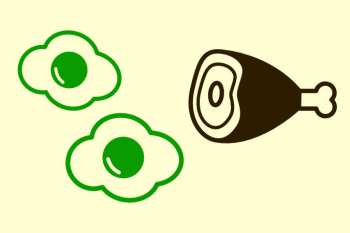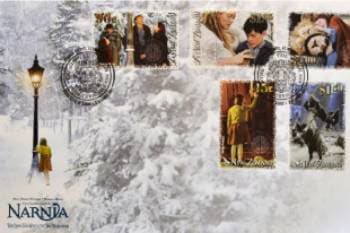6 Things That Make Dr. Seuss Books So Good
What parent doesn’t have a Dr. Seuss book on their shelf? Dr. Seuss’s books are one of the first books millions of children read as their first books ever, and often, they make us love reading in general. But what’s so special about Dr. Seuss’s books that we just keep returning to them?
The catchy rhyme and optimistic tone of Dr. Seuss’s books are what make them so good. Another reason adults and children love them is their concise style. They share important lessons through straightforward language. Kids also love the illustrations in his books.
We already know Dr. Seuss’s books are amazing — we won’t even discuss that. However, the answer may not come easily when you start thinking about why everybody likes reading his books. Here with six reasons why Dr. Seuss’s books are so good.

1. The Catchy Rhyme in Dr. Seuss’s Books
I guess I can start by saying: It’d be a crime not to let your kids read Dr. Suess’s rhyme. Unlike my attempt, the rhyming schemes in Dr. Suess’s books are a marvel to look at and read aloud — and children’s books are all about reading aloud.
Kids simply love hearing the musical quality of Dr. Seuss’s books. That musicality comes partly with characters’ and different places’ names but mostly because of the rhyme. Dr. Seuss often used internal rhyme coupled with end rhymes. Most of the words within the lines in his books rhyme with others inside the line and the last words of that line.
For example, look at these lines fromHorton Hatches the Egg: I meant what I said, and I said what I meant…An elephant’s faithful, one hundred per cent!
Dr. Seuss drew inspiration from centuries-old nursery rhymes that incorporated rhyme schemes, which parents often sang or read aloud to their children.
Apart from being fun for young readers, rhymes are also beneficial for their development. According to Queensland Government in Australia, rhymes aid kids to:
- Learn words
- Form their native language
- Become literate
Moreover, Timothy Shanahan — a literacy expert — wrote an article for Reading Rockets where he mentioned that rhymes are a prerequisite for reading. Therefore, Dr. Seuss’s books aren’t only interesting to kids for their rhymes but highly beneficial for their literacy development.
2. The Amazing Plots Dr. Seuss Devised in His Books
One of the most important characteristics of any book is the plot. If you have a boring plot without much action, chances are your readers will soon abandon your book halfway through. Any book, even a children’s book, must have an enticing plot.
That’s also why writing for children can be more difficult than writing for adults: It’s harder to keep children’s attention for longer.
That’s why Dr. Seuss’s books are still so good. They entice children (and adults) with the fantastic plots he created.
Dr. Seuss’s plots don’t even involve human beings. They’re usually placed in imaginary worlds (like Whoville) with fictional characters only resembling humans slightly (such as Whos). But human emotions are always present in his characters — happy and sad.
Part of the reason Dr. Seuss is always among the most-read children’s authors is because of his enticing plots. If you’re interested in other great works of children’s literature, read my article 9 Most Read Children’s Books in the World.
3. Kids Love Dr. Seuss’s Illustrations
I guess many adults also appreciate Dr. Seuss’s drawings in his books, but it’s a special experience with kids when they see those amazing illustrations. Who can forget Dr. Suess’s unique drawing style — and yes, he drew the illustrations himself.
Once kids see his drawings, they can never forget them. Dr. Seuss’s characters usually have:
- A lot of hair
- Long and thin legs and arms
- Bright colors
Of course, the architecture in his books is also unique. This is best seen in Whoville (Horton Hears a Who! and How the Grinch Stole Christmas!). Dr. Seuss liked the cartoony drawing style. So, the buildings were always almost round and often leaned to one side.
4. The Vocabulary In Dr. Seuss’s Books Is Suitable for Kids
Okay, every children’s book is written primarily for children and has simple phrases and words. Dr. Seuss, however, paid meticulous attention so that every child of a certain age could understand his books.
Dr. Seuss always tried to use simple words and phrases. Also, his books are filled with sounds. This is called onomatopoeia. A perfect example is Dr. Seuss’s short book Mr. Brown Can Say Moo! Can You? Dr. Seuss uses sounds like moo, buzz, or eek in the book.
Add to this that Dr. Seuss’s books are usually short, and you get some happy kids. Children love nonsensical language and short books. The best example of a short Dr. Seuss book is Green Eggs and Ham, with only 50 words. The book resulted from a bet when Dr. Seuss wrote The Cat in the Hat (255 words), and he believed he could write an even shorter book.
5. Adults And Children Can Read Dr. Seuss’s Books
Another sign a children’s book is good is if an adult reader can read it and like it. And that’s certainly the case with Dr. Seuss. No matter how old you are, you can always find room in your heart and time in your day for a Dr. Seuss book.
Why’s that? Just because Dr. Seuss wrote in this silly manner to make kids laugh doesn’t mean his books don’t offer something for adults. His books are filled with important lessons and messages adults can understand as metaphors.
Dr. Seuss criticized the worst in us through his books and praised the best. Most prominently, Dr. Seuss liked to write about our differences and how accepting we should be of everyone.
How the Grinch Stole Christmas! is a perfect example of this. Grinch is the only one in the book who’s different — he’s green and hairy — and the Whos don’t accept him based on his looks. By the end of the book, they all open their arms to Grinch, but Dr. Seuss (through Whos) criticizes humans for our racial stereotypes and prejudices.
6. Dr. Seuss Liked To Invent New Words
Like all the great children’s writers, Dr. Seuss liked to play with and invent new words in his books. His coming up with words was always tied with his rhyming scheme. Unlike Roald Dahl, who didn’t like to use too many adjectives, Dr. Seuss saw beauty in them.
A great example is these lines from Fox in Socks: This is what they call…a tweetle beetle noodle poodle bottled paddled muddled duddled fuddled wuddled fox in socks, sir!
Sources
- SCL Health: Important Lessons That Adults Can Learn from Dr. Seuss
- The Ladders: The Power of Constraints: How Dr. Seuss Used Only 50 Words to Write His Best-Selling Book of All Time
- English Live: A Whizz Bang Guide to Onomatopoeia – What Is It and When Should You Use It?
- Reading Rockets: Shanahan on Literacy
- Queensland Government: Rhymes, Rhythm and Repetition
- Oxford Bibliographies: Nursery Rhymes
- Barnes and Noble Reads: The 8 Best Rhymes of Dr. Seuss
- Britannica: End Rhyme
- LitCharts: Internal Rhyme
- James Clear: The Weird Strategy Dr. Seuss Used to Create His Greatest Work
- Cascadia Content: 7 Things Dr. Seuss Taught Us About Content
- Quora: Why Were Dr. Seuss’ Books So Popular With Young Children? Was It the Stories, Pictures, and Illustrations? Did He Have a Gift of Reaching Young Minds?
- Busy Bee Education: Why We Love Dr. Seuss





